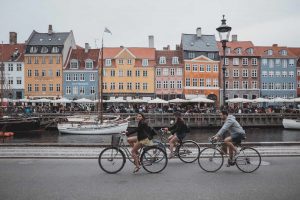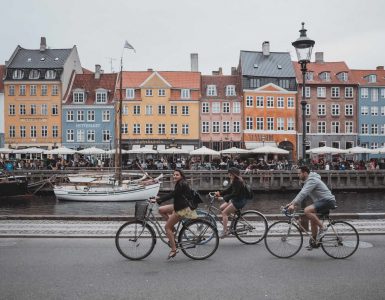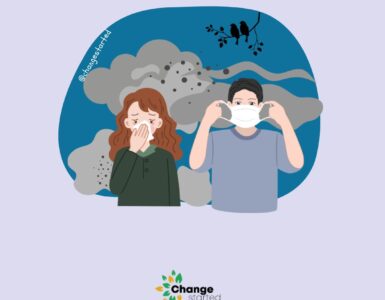When American singer Taylor Swift performed in Spain’s Real Madrid’s Bernabeu stadium last year, more than 20 residents complained of unbearable noise. The residents even sought to take legal recourse to block future events.
Noise pollution, defined as unwanted or harmful sounds disrupting human and animal life, is a significant environmental and health concern.
While music concerts are one of the sources of noise pollution in cities, the rapid urbanization, marked by increasing population concentrations in cities, while offering economic and social advantages, simultaneously exacerbates this issue.
The relentless sounds of urban life—from traffic and construction to industrial operations and general human activity—create a constant barrage of noise that negatively impacts human health, well-being, and the broader environment.
This article explores the link between urbanization and noise pollution, including practical solutions being implemented globally to address this escalating challenge.
Sources of Urban Noise
Transport
Traffic constitutes a major source of urban noise pollution.
Although modern vehicles are engineered to minimize noise output, illegal modifications, particularly to exhaust systems, are a persistent problem, deliberately creating excessively loud and disruptive noise.
Noise pollution in cities is further exacerbated by vehicles honking on roads that struggle with traffic congestion.
Construction
Construction sites become a ubiquitous feature of the urban environment. The rapid pace of urbanization fuels a constant demand for new buildings, roads, and infrastructure.
Further, due to the municipality’s demands, there is constant construction, repairs and maintenance and they are notorious for generating substantial noise pollution.
Heavy machinery operation, demolition activities, and hammering create intense and often prolonged noise disturbances that significantly impact surrounding areas.
Industries
Industrial zones located within or near urban areas are another significant source of noise pollution in cities.
The operation of heavy machinery, factories, and various manufacturing processes within these zones generates high-intensity noise that can propagate over considerable distances, impacting residential areas and contributing to overall urban noise levels.
Entertainment and Recreation
Urban centres, as vibrant hubs of commerce and recreation, also contribute to noise pollution. Shopping malls, restaurants, entertainment venues, and public events generate significant noise.
At the musical, entertainment and sports events, the din generated due to the combination of crowds, music, and amplified sound systems elevated the overall noise level, adding to the acoustic burden of city life.
Consequences of Noise Pollution
Noise annoyance is defined as a feeling of resentment, displeasure, discomfort, dissatisfaction, or offence experienced when noise interferes with an individual’s thoughts, feelings, or activities.
The impact of noise pollution is more severe on children, elders, and animals, where chronic exposure to elevated levels of community noise poses significant health risks.
Exposure to even moderate levels of road traffic noise can impair cognitive function in children, affecting attention, concentration, sound discrimination, memory, and reading ability.
Noise significantly disrupts quality sleep, even hindering the ability to fall asleep quickly. Noise acts as a biological stressor, triggering the body’s autonomic nervous system and initiating chemical mechanisms associated with arousal and alertness. As a result, noise can contribute to or exacerbate conditions related to chronic stress.
While research is ongoing, preliminary evidence suggests a link between exposure to higher levels of road traffic noise and an increased risk of myocardial infarction (heart attack).
Taking Actions in Real Time
While urban noise pollution presents a significant challenge, numerous cities worldwide have implemented effective strategies to mitigate its impact.
Urban Planning
Strategic urban planning is crucial in mitigating environmental noise pollution.
Zoning regulations can effectively separate residential areas from industrial and commercial zones, minimizing noise intrusion. Green spaces, parks, and strategically planted trees act as natural sound barriers, absorbing and reducing noise levels.
Furthermore, building design can incorporate noise-reducing features such as soundproof windows and enhanced insulation.
Curitiba, Brazil, is recognized for its exemplary urban planning, which incorporates extensive green spaces and a well-designed public transportation system that effectively minimizes traffic noise.

Traffic Management
Effective traffic management strategies are essential for reducing traffic noise pollution in cities.
These strategies include optimizing traffic flow, promoting the use of public transportation, encouraging cycling and walking as alternative modes of transportation, and implementing traffic calming measures such as speed limits and noise barriers.
Copenhagen, Denmark, has prioritized cycling and pedestrian infrastructure, significantly reducing reliance on automobiles and fostering a quieter urban environment.
On the other hand, Zurich, Switzerland, has implemented stringent noise regulations and enforcement measures, including specific noise limits for vehicles and construction sites.
Technological Advancements
Technological advancements offer innovative solutions for mitigating urban noise pollution.
These include the development of quieter vehicles, machinery, and construction equipment. Strategically placed noise barriers constructed from sound-absorbing materials can effectively reduce noise propagation along roads and railways.
Furthermore, noise-cancelling technologies can be implemented in buildings and public spaces to create quieter environments.
Cities like Oslo, Norway, which has actively promoted EV adoption, are experiencing the benefits of a quieter urban environment.
Wrapping Up
Urbanization, while offering numerous benefits, has significantly contributed to the problem of noise pollution.
The constant hum of traffic, construction sites, industrial activity and entertainment centres creates an auditory assault that impacts human health, well-being, and the environment.
However, by implementing a combination of strategic urban planning, effective traffic management, strict noise regulations, and technological solutions, cities can create a quieter and more livable environment for their residents.
Furthermore, raising public awareness about the detrimental effects of noise pollution in cities and promoting responsible behaviour is essential for long-term noise reduction.
As urbanization continues, prioritizing urban noise pollution reduction strategies will be crucial for creating healthy, sustainable, and enjoyable urban environments for all.






Add comment